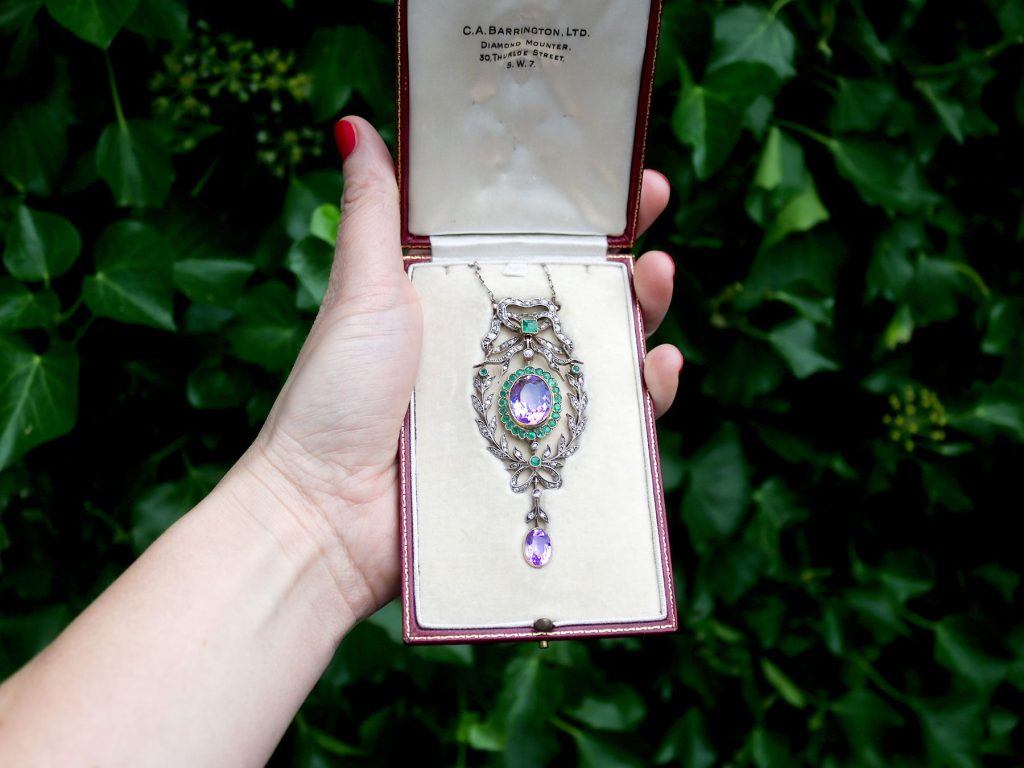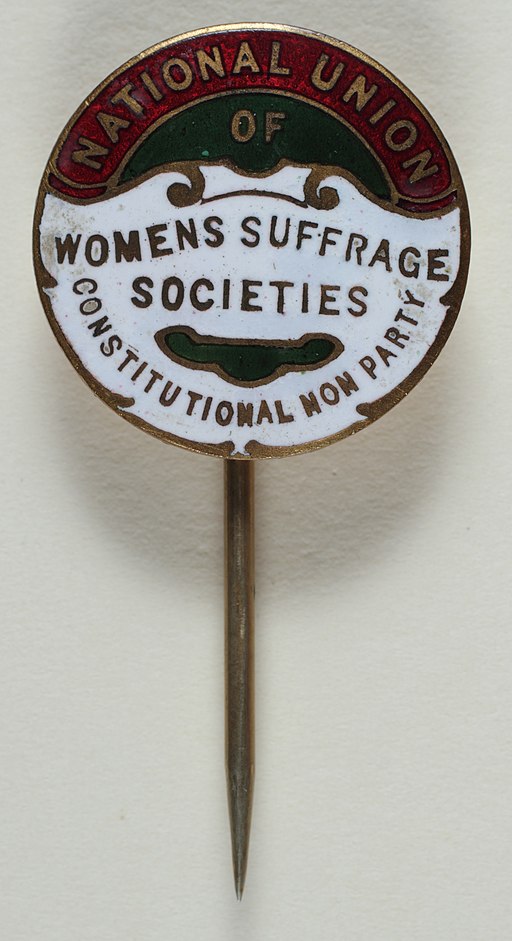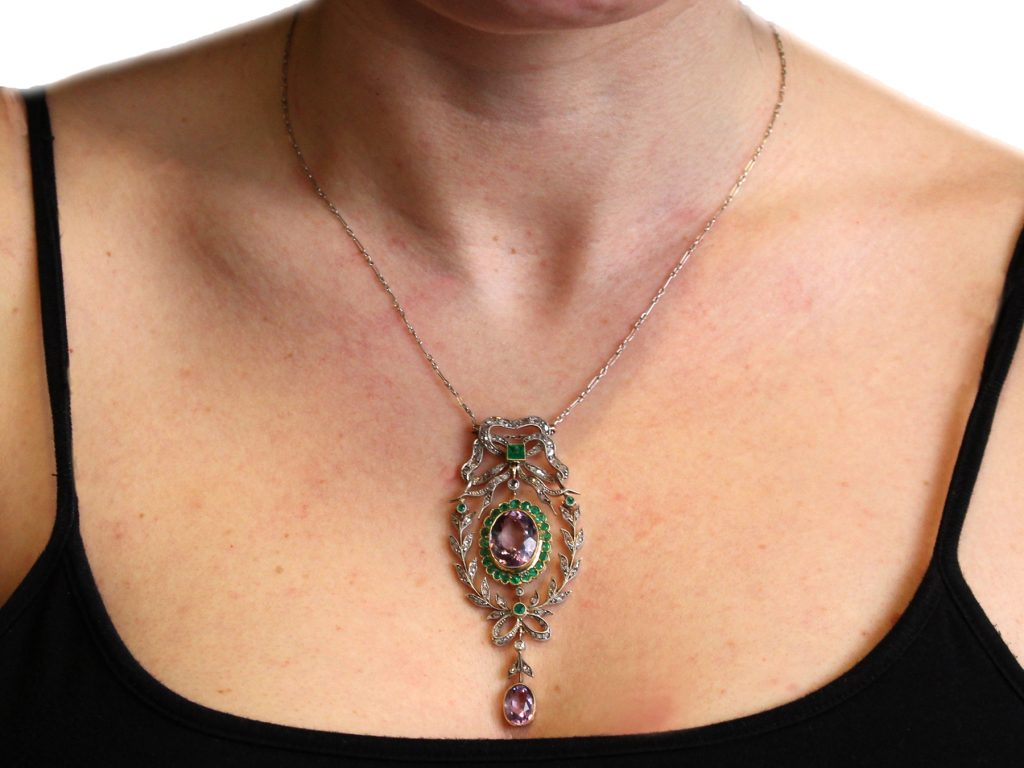A Guide to Suffragette Jewellery
In the broadest terms, Suffragette Jewellery encompasses a wide range of jewellery which was either commissioned for, or worn by, supporters of the Suffragette and Suffragist movements in the early 1900s. The distinctive feature of most of this jewellery was its colour scheme: Green, white and violet, which adhered to the campaign colours of the Women’s Social and Political Union (WSPU).

It’s easy to doubt the authenticity of some pieces. Whether they are genuine Suffragette / Suffragist jewellery pieces or they just contain the relevant colours is difficult to discern. Equally, the question is asked of if it matters whether a piece is genuine if it shares the right colours and is from the right era. The label ‘Suffragette Jewellery’ is sometimes attached to pieces simply to increase their value. Jewellery can be at least tentatively associated with the movement by its colours, stylistic features and age, even if there is no empirical evidence.
The History of Suffragette Jewellery

The Suffragettes were a group of female activists who campaigned and protested for their right to vote at the beginning of the 20th Century. The group was originally borne out of the Suffragist movement which began in the 1860s and fought for the same cause but in a less radical manner. The Suffragettes’ struggles and passionate protests were key factors leading to women (over the age of 30) being granted the vote in 1918, and later, universal suffrage in 1928.
The Suffragettes/WSPU were thought to have been the first campaign group to use specific colours and design styles to further their cause and create a political identity. Emmeline Pankhurst’s daughter, Sylvia, was one of the leading designers of the movement. She created the iconic Holloway Brooch (a copy of which was worn by Meryl Streep in the 2015 film Suffragette); it depicts the ‘portcullis’- a gate hanging in chains, which is the motif of the house of commons- and enamel detailing in white, green and purple.
It is difficult to distinguish the difference between explicitly Suffragette jewellery and simply jewellery with popular Edwardian themes. We can assert, however, that wearing jewellery in this style at least before the First World War was definitely associating oneself with the movement.
What are the Suffragette Colours?
The enamel detailing was essential, including the Suffragette colour palette of white, green, and purple. These colours each symbolise a core component of the struggle for women’s suffrage. Green represented hope, white was indicative of their purity, and purple – or violet – represented the dignity of the women working for voting rights. It was also believed that these colours represented the motto of the Suffragette movement: Give Women the Vote (hence the use of violet rather than just purple).
The co-editor of the Votes For Women newspaper, Mrs. Pethick-Lawrence, was quoted in 1908 explaining her interpretation of the colours of the WSPU:
“Purple as everyone knows is the royal colour. It stands for the royal blood that flows in the veins of every suffragette, the instinct of freedom and dignity…white stands for purity in private and public life[…]green is the colour of hope and the emblem of spring.”
Despite these interpretations, some claim that the colours are merely coincidental, or designed to adhere to the favoured gemstones of the Edwardian period- amethysts, pearls and emeralds. Whether it was a conscious choice to have colours representing specific symbolism, or whether the Suffragettes were simply maintaining their status as highly fashionable women, it can’t be denied that the three colours carry significant weight today.
At AC Silver, we have had in our collection a wonderful pendant in the Suffragette colour scheme which, judging by the date (circa 1910) and the stylistic features, is highly likely to have been affiliated with the political movement. It features an abundance of stunning amethysts, emeralds and diamonds. The traditional pearls have been supplanted with diamonds to represent the ‘white’ colour, symbolising purity and enhancing the item’s quality and value.

Our guide wouldn’t be complete without examining the current market for Suffragette jewellery. Any reputable jewellery dealer will clearly distinguish whether they are selling a piece which is genuinely an artefact from the Suffragette movement (evidencing this with its provenance), or a piece displaying the colours associated with the cause and crafted during the same time period.
Whether items are certifiably Suffragette Jewellery pieces or only made in the same vein, this style of jewellery is immensely popular and highly sought after. Whether this be due to the political connotations of the pieces or because jewellery enthusiasts today (just like the Edwardians) are fond of the white, green and purple colour scheme, the popularity of Suffragette jewellery prevails.





